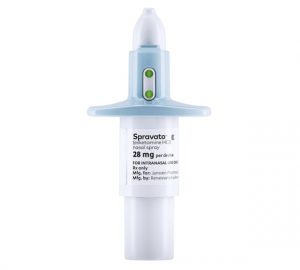 The issue of eskatamine— a close relative of ketamine now up for approval as a treatment for depression, in the form of a nasal spray — first arose back in March. My attention was drawn by an enthusiastic first person account from a patient. So enthusiastic, in fact, that it felt like a commercial for the drug. Here’s my post with a link to the original article: Ketamine Comeback.
The issue of eskatamine— a close relative of ketamine now up for approval as a treatment for depression, in the form of a nasal spray — first arose back in March. My attention was drawn by an enthusiastic first person account from a patient. So enthusiastic, in fact, that it felt like a commercial for the drug. Here’s my post with a link to the original article: Ketamine Comeback.
Now, only a few months later, the same newspaper provides us with a second piece, this one far more critical.
What happened? Mostly, further review and analysis turned up some problems. These came from experts who were not directly associated with Janssen, the drug’s maker, or Johnson & Johnson, Janssen’s parent company.
You may recall that J&J has recently been sued by the state of Oklahoma for its role in the prescription opioid epidemic. In addition to making and marketing its own products, J&J actually grows opium poppies used by others to make their drugs.
Anyway, we’ve seen a big push within the Federal government to get esketamine into widespread use, principally through the VA’s massive health system. Some objections already on record:
- Is this drug truly effective? We’re not 100% certain. The first two trials suggested it was no better than placebo. The FDA accepted a third trial which apparently did support its effectiveness, at least marginally. This third trial was criticized as different from its predecessors, and perhaps less reliable.
- There’s no evidence yet that the drug is effective with target populations such as males or persons over 65– two groups that dominate the VA patient population. Why is that missing?
- During the trials, there were more deaths than predicted — 6 who received the drug, including suicides, versus none in the control group. Not sure what that means, but it isn’t a good omen.
- Also during the trials, researchers observed dissociation and elevated BP during induction — meaning the patient had to remain in the clinic for at least two hours, under observation. Those symptoms are typical of ketamine intoxication. What’s going on there?
Last but not least, there is the issue of cost. This drug is expensive — $900 for the initial treatment, and an estimated $7000 over the first few months. Presumably much of this profit margin for the maker. Can this be negotiated down by the VA, given that taxpayer funds are involved?
By the way, the drug now has an official brand name, Spravato. A play on nasal spray? I’m not sure about the ‘vato’ part. In Mexico that just means “dude”, so maybe the name translates to “Spray, Dude?”
I’m kidding.
Anyway, the article specifically mentions the active role played by the President in pushing for approval for use by the Veteran’s Administration. Such interference from presidents, no matter who they are, is never a good idea. Most presidents know little or nothing about the intricacies of treating major mental illness. Best if they leave such decisions to those who do.
I think to be safe the approval process should be extended until decision-makers have a better grasp on the likely outcome of widespread use with a vulnerable population such as VA patients. Could be that there are risks we haven’t yet identified, or benefits that have been overstated (again) by commercial interests.
Plus we already know the drug is overpriced.










